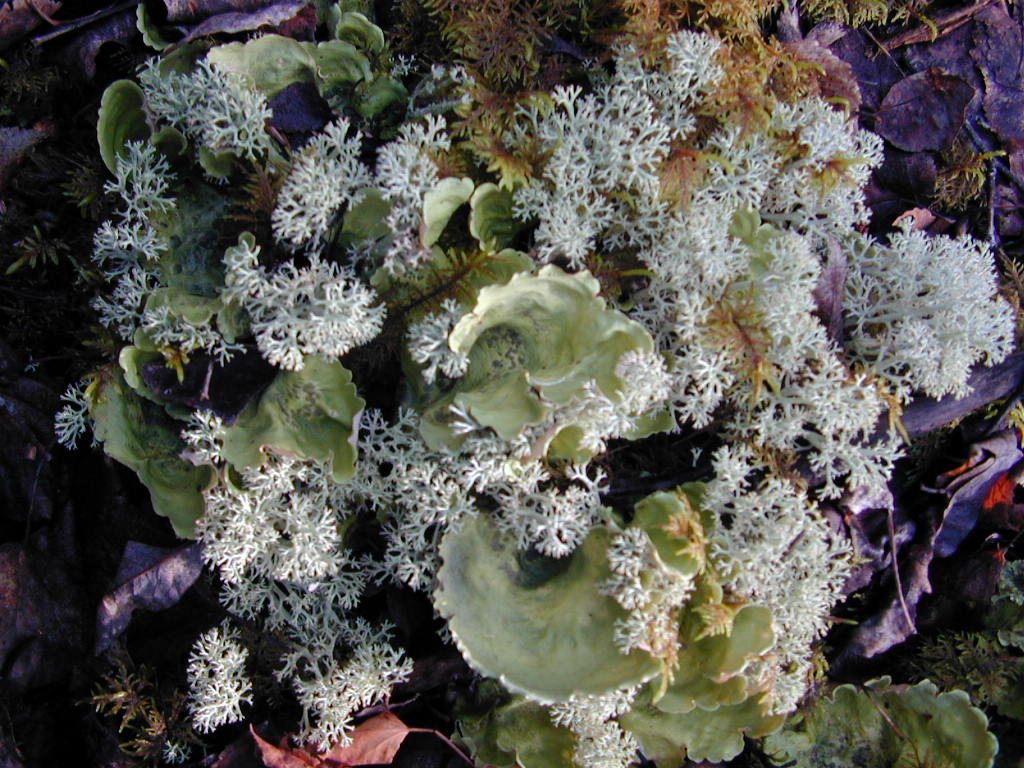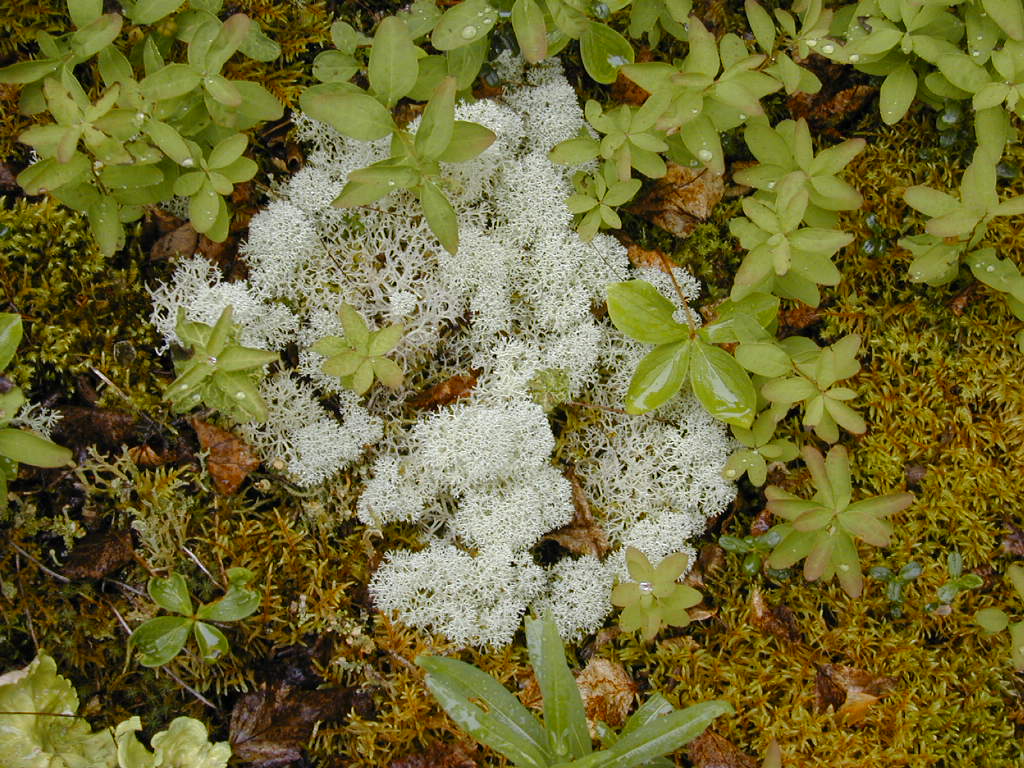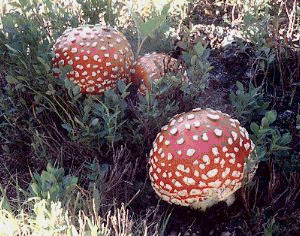Reindeer are herbivores that consume most of their diet by
grazing, and eat up to 12 pounds of food a day.
In the winter months, 90% of the reindeer's diet is constituted of
lichens, specifically Cladonia rangiferina (reindeer
lichen) .
Other species such as C. arbuscula (shrubby or tree reindeer
lichen), C. mitis (green or yellow reindeer lichen), and C. stellaris
(star or star-tipped
reindeer lichen) are also all consumed by reindeer. The reindeer
are essentially dependent upon them for survival.
Lichens are mutualistic combinations of a fungus and either an alga or
cyanobacteria, and are able
to thrive in harsh conditions by growing
close to the ground in thick colonies on nearly bare rock, or in a thin layer of
soil. Reindeer uncover the
snow-covered lichens by kicking holes in the ice and snow to expose them.
Learn more about other reindeer adaptations
here. This “cratering” technique
gives them a competitive advantage over other herbivores of the area who can
only rely on boreal lichens. Lichens
are rich in carbohydrates and low in protein content; reindeer are able to break
down carbohydrates, fiber, and metabolize nitrogen by
mutualistic bacteria in the rumen
portion of their four-chambered stomach.
Because lichens are lacking in protein, they also consume other
protein-rich foods such as lemmings, bird eggs, and mushrooms
to make up for it.12

To learn more about reindeer lichens, check out this
great site on
Cladonia rangifera!
In the summer months they consume leaves of willows and birches, roots and
tubers, wood/bark and stems, mushrooms as stated above, cotton grass, mosses,
blueberry bushes, sedges, bryophytes, and other types of ground vegetation.
Reindeer possess small, weak teeth, and spend a large portion of their
time chewing.10
In reference to mushrooms, reindeer especially love the hallucinogenic
mushroom
Amantia muscaria.
To learn more about the
reindeer's appetite for these intoxicating and hallucinogenic mushrooms, and how
it may have also contributed to the legend of Santa Claus and his flying
reindeer, check out this interesting
video!

Reindeer store their food as fat, which they use as a
reserve in the winter months to conserve energy when food is scarce.
Because they are ruminants, they possess a four-chambered stomach for
digestion of food. The reticulum,
rumen, and omasum are the primary compartments for digestion before food enters
the stomach (abomasum). These
compartments allow the reindeer to digest vegetation that humans cannot. The
reticulum collects foreign objects and also moves ingested food into the
subsequent compartments. The rumen
is the large "fermentation vat" that contains millions of bacteria.
These bacteria secrete enzymes that have the ability to degrade
cellulose. The rumen also absorbs
fatty acid by-products of digestion.
The omasum helps to grind food, and also removes liquid from ingested roughage.
Lastly, the abomasum is the site of gastric secretion that digests food and
specifically carbohydrates, and it contains a low pH that
breaks down protein
and kills any bacteria that may be present.18
Learn about the
life history of reindeer from young to old
next!
Home
Back to top



